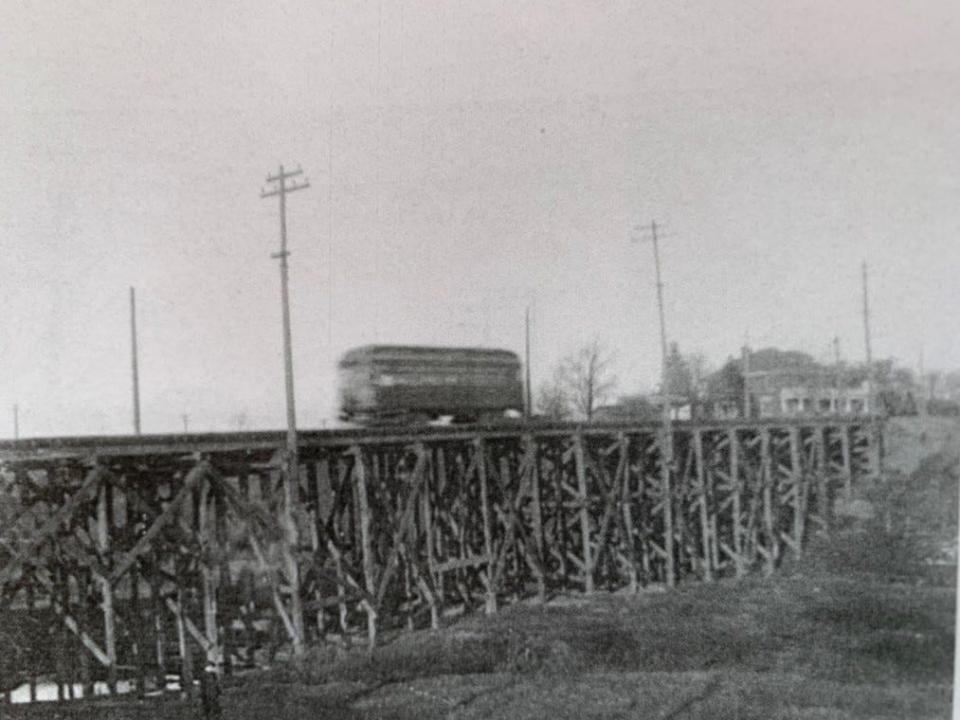Steve VanderVeen: The many hats of former mayor William Beach
William Beach was a rainmaker.
He was born in 1851 in Livingston County, New York, the son of Horace and Catherine Giddings Beach, who moved to Holland around 1870. William married Myrtle Almina and together they had two children: Myrtle and Chester.
More: Van Raalte's son was a patriot, farmer and merchant
More: Holland founder was a 'social entrepreneur'
More: The foresight of the Walshes and Brooks
In 1878, William and his brother, Horace, launched the Beach Brothers Mill, one of five mill operations in Holland. One of Beach’s biggest suppliers was Ben Van Raalte, son of Holland’s founder, Albertus Van Raalte.

Later, William partnered with Frank White. Their mill was located at 263 E. Eighth St. — where they produced Little Wonder Flour. Their biggest competitor was the giant four-story Standard Roller Mill operated by Heber Walsh and Cornelius De Roo, located at Sixth Street and River Avenue.
In 1882, Beach helped raise funds to replace the decrepit River Avenue bridge, though nothing happened until 1889 because Holland and Holland Township couldn't agree on the size of the bridge or who would cover the costs.
Beach also spearheaded the construction of the city's water works on East Fifth Street. Around this time, Beach had one of Holland’s first telephones installed in his business.
In 1884, the community elected Beach mayor of Holland. He served two terms.
In 1892, John C. Post led Beach, Arend Visscher, George Hummer, Gerrit Diekema, Henry Kremers and Isaac Cappon to form the Holland Improvement Company. Their first goal was to make a direct passenger service to Chicago, which they did when they formed the Holland and Chicago Transportation Company. Beach served as president.

Other officers were W.B. Griffin of Saugatuck (Vice President), De Roo (Secretary), and Post (Treasurer). They aptly named the company’s ship, built at Saugatuck shipyard Rogers and Bird, "The City of Holland." Many of their first customers rode to and from Chicago’s 1893 “White City” Columbia Expedition at Jackson Park.
Another goal of the Holland Improvement Company was to develop the industrial and residential property around 24th Street and Columbia Avenue, called Prospect Park. But before Beach started work, and and his friends recruited Pittsburgh's H. J. Heinz Company to Holland in 1896.
In 1901, Beach and his partners sold the Holland Transportation Company to the much larger Graham and Morton Transportation Company, then the leading carrier on southern Lake Michigan waters.
Then, with Philip McBride and Gerrit Diekema, Beach drained the swamp between 20th and 22nd Streets and developed more land for residential homes. During those years, Beach also served as president of the Holland City State Bank.
In 1905, Beach became vice president of the Holland and Lake Michigan Railway, which focused on the “Interurban,” an electric passenger and freight service that initially ran from downtown Holland to Jenison Park, and later to Grand Rapids, Saugatuck and Ottawa Beach. A conglomerate later bought the system, which closed in the 1920s after the automobile spiked in popularity.
To fill the industrial space around Prospect Park, Beach encouraged William Bush and Walter Lane to move the Bush and Lane Piano Company from Chicago to Holland in 1905, along with approximately 60 workers.
Then, in 1906, Beach and some of his friends acquired Bush's interest in the business, whereupon Beach became general manager and treasurer. Later, he served as vice president.

Beach also helped lure John Kolla and his son-in-law, August Landwehr, to move from Akron, Ohio, to start Holland Furnace Company, which they did in 1907. Holland Furnace helped finance and maintain the Warm Friend Tavern and became Holland’s first locally owned business to have its shares traded on the New York Stock Exchange.
Subscribe: Learn more about our latest subscription offers!
In 1930, Beach served as president of Peoples State Bank. In 1933, the year he died, Beach recruited Hollis Baker to move his furniture factory to Holland from Allegan into the Bush and Lane Piano Company building.
Both the popularity of the radio, which became the centerpiece of people’s parlors, and the Great Depression contributed to Bush and Lane’s demise. Today, the building holds Baker Lofts.
Information from this article comes from Robert Swierenga’s "Holland, Michigan," Donald Van Reken’s "The Interurban Era" and "Holland Furnace Company," and ancestry.com.
— Community Columnist Steve VanderVeen is a resident of Holland. Contact him through start-upacademeinc.com.
This article originally appeared on The Holland Sentinel: Holland History: The many hats of former mayor William Beach

